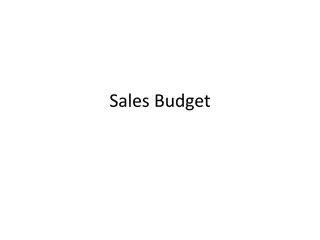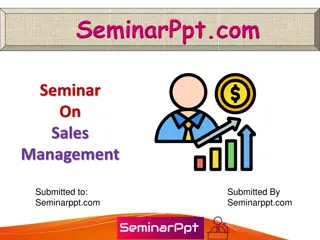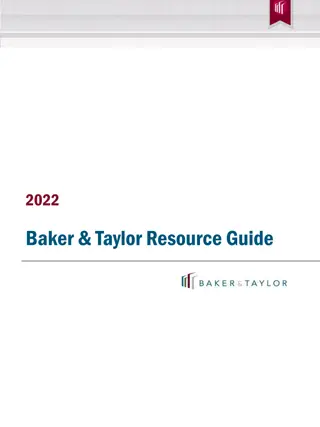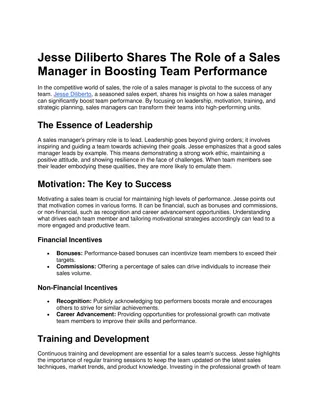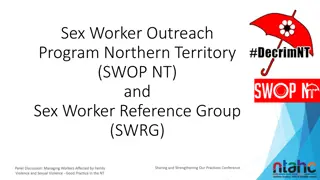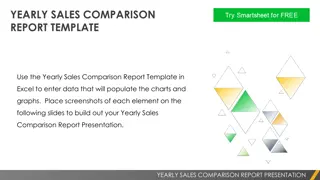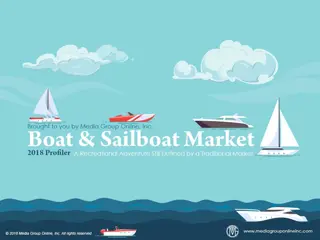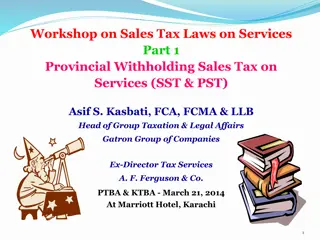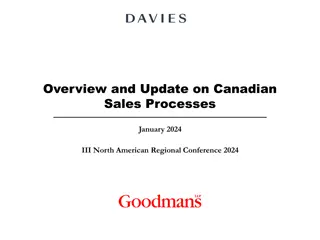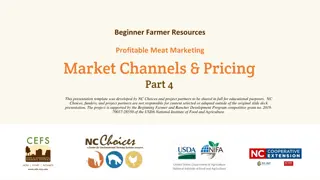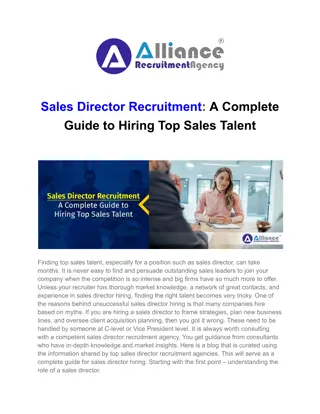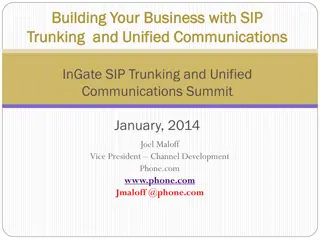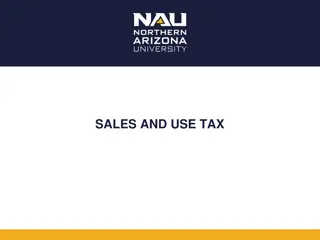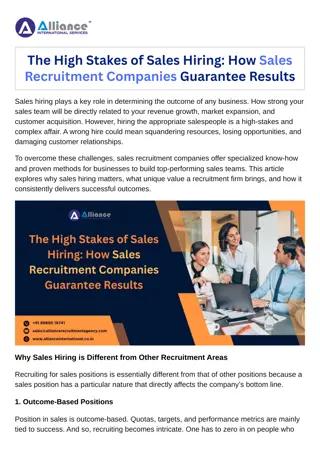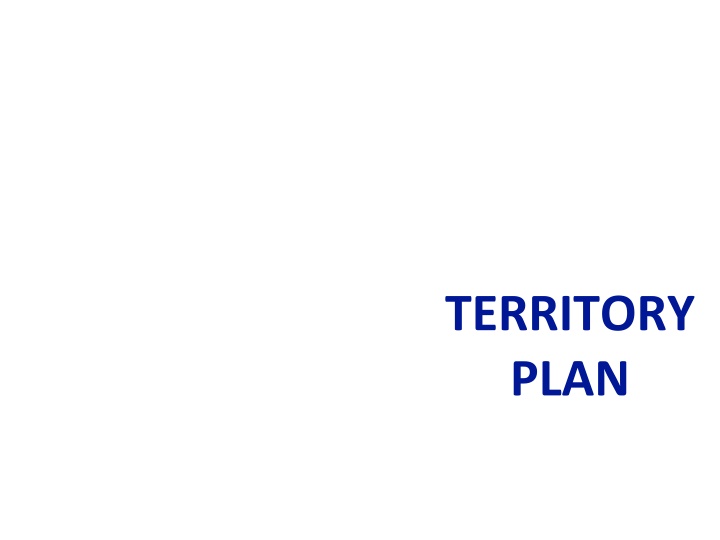
Effective Territory Management Strategies for Revenue Maximization
Learn how to develop a successful territory management plan that drives revenue growth by focusing on key areas, analyzing results, building a strong strategy, identifying resources, and understanding market trends and competition impacts. Effective territory management involves aligning with growth initiatives, retaining customers, analyzing territories, and leveraging selling efforts efficiently.
Download Presentation

Please find below an Image/Link to download the presentation.
The content on the website is provided AS IS for your information and personal use only. It may not be sold, licensed, or shared on other websites without obtaining consent from the author. If you encounter any issues during the download, it is possible that the publisher has removed the file from their server.
You are allowed to download the files provided on this website for personal or commercial use, subject to the condition that they are used lawfully. All files are the property of their respective owners.
The content on the website is provided AS IS for your information and personal use only. It may not be sold, licensed, or shared on other websites without obtaining consent from the author.
E N D
Presentation Transcript
TERRITORY PLAN
What is Territory Management? An effective territory management plan helps drive and maximize revenue. Because territories can be so diverse, it is important to focus on key areas of a territory to effectively leverage selling efforts and resources. In order to develop a Territory Management Plan, the following needs to be considered: Characterize The Territory and align with our strategic growth initiatives Analyze The Territory and Accounts How to proactively retain and engage customers to support our Growth & Coverage strategy 2
2015 Results Q1 Q2 Q3 Q4 YTD Base Retention Growth (%) Type of Growth Number of Deals Total $ Value % of Total Organic Net New Share of Wallet 3
Building a Territory Plan Identify Help You Need Internal Resources Identify Actions/ Activitie s Understand how to get to a decision maker Analyze Your Territory Look For Patterns Build The Plan What activities need to be completed to get desired outcome? What are my accounts? Are there times of day/week that are closing more sales than others? Manager Peers E-Learning Modules Key Players List Trainings Buyer Personas How much have they spent? Work with manager to develop strategy to get in the door Call scripts and role playing What are next steps Specific actions / strategy? How am I doing against quota? Are there common pain points? What are my targets? Specific products selling more than others? External Resources Create a list of prospects? Partners >$1M : Use the external plan and attach in SFDC <$1M : Use the Account Plans in SFDC 4
Territory Overview Identify what is happening in your customers business market trends, economic trends, etc. (leverage your Customer Reporting team for analytics) SWOT (Strengths, Weaknesses, Opportunities, Threats) for your territory Objectives specific measureable goals Which markets or geographies will you focus on? How many opportunities do you need to add to your funnel? How are you leveraging marketing campaigns? Strategy for your plan (accountability throughout the year) *your personal MAP on slide 18 What is the competition doing in your territory? Examples of how it s impacting your business What trends are you seeing in your territory? Product and Economic trends Industry Trends/Innovation How are you using your Sales Process and talking about our initiatives on your calls? 5
Segmenting Your Territory Working with your manager, segment your Territory Break the territory down into smaller market segments as part of the territory management plan Look for groups of current and potential customers having a similar set of needs and requirements Market segments can be broken down by: Customers with similar needs and requirements Customers who function and operate similar businesses Location and geographic boundaries Industry and similar SIC codes Existing, target, or business development accounts Size and total company revenue Accounts that utilize similar partner types Competitive or strategic accounts 6
Territory Overview List Your Top 10-15 Accounts Amount $ with Current LOB(s) Account Plan? Yes/No Customer Name Key LOB 7
Current Pipeline Overview These Opportunities might have Deal Clinics (Strategy Meetings) Must have Details and Key Decision Makers, strategy developed. Insert Your SFDC Pipeline 8
Opportunity Pipeline Purpose is to identify those I can help with to move into the regular pipeline Account Plan? Yes/No Opportunity Type Opportunity Description Close Date Client Name Amount $ $ $ $ $ $ $ $ $ TOTAL $ 9
Churn and Decline What is happening in your territory? Is your account base inclining or declining? What is your expected incremental growth? Growth on base (organic, due to customers business growing or shrinking) What is your combined net new and SOW growth? Which revenue bands are declining at what rate? E.g. are you losing volume on big accounts or volume on smaller accounts Which accounts are at risk or projected to Churn or decline? Consider Corporate Increase, ops challenges (churn due to inventory issues, technical issues etc ) Alliances and partners any accounts moving away Rate shoppers at risk due 10
Customers that may be at RISK of Churning YTD Previous Year Revenue Customer Name Issue/Plan Revenue 11
Contact Strategy Guide for Outside Sales Frequency (minimum) Customer Size Activity or Contract Type Lead Measure $1M + 4 per year Dashboard based on tasks loaded in SFDC Quick view to coverage Compliancy Track Activities/Churn/Decline Track opportunities resulting in the Account Face to Face Topics QBR Sales Process Discovery Session $500K - $1M 2 per year $100K -$500K 1 per year under $100K 1 per year Call Strategies Expanding Levels Expanding LOBS Working Affiliates more effectively Decline visit or call (based on decline/churn report) Log in SFDC as decline account # of Contacts in SFDC (new contacts only) Based on ALL Named Accounts $1M + 10-11/per year (Approx. once a month) 10 $500K - $1M 6 $100K -$500K 5 under $100K 3+ $1M+ (need account plan, attached separately) *could be used for Top X also Updated Yearly *Territory Plan Published on P or R drive under Divisional/Region Account Plans (attached to SFDC under notes & attachment) Rest of accounts (use account plan in SFDC) Updated Yearly All Accounts 100% compliance Marketing Campaigns Dashboard in SFDC for visibility 12
Renewals (Custom Contracts Only) Contract Expiry Renewal Amount Customer Name Yes/No 2016 Revenue $ $ $ $ $ $ $ $ $ TOTAL $ 13
Sales Funnel Personal Opportunity Pipeline (Top X) Total $ $ $ $ $ Opportunity Pipeline Total $ $ $ $ $ 14
Q1 Growth Potential Finish* Q1 Against Quota YTD Against Quota Q1 Actual Q1 Forecast (ACTUAL + FORECAST) Q1 Actual : Q1 Forecast = who are you closing and what are they billing? 15
Pipeline Health Likely Finish (Fiscal Amount Q1 + Q2) Q1 Pipeline Q2 Pipeline Annual Quota Total # deals (Q1 + Q2) # DEALS # DEALS Please add: Days To Close Compliance Rank Closing Ratio (assume 30%) - Is your pipeline big enough? 16
Territory Overview 3 things I did well. 1. 2. 3. 3 things I would like to improve on and why. 1. 2. 3. The repeatable behavior or process I used in my largest win was 17
Key Milestones (Your Own Personal MAP) Key goals List who, what, when, why? Mid-point check-in with your Director in June 18



